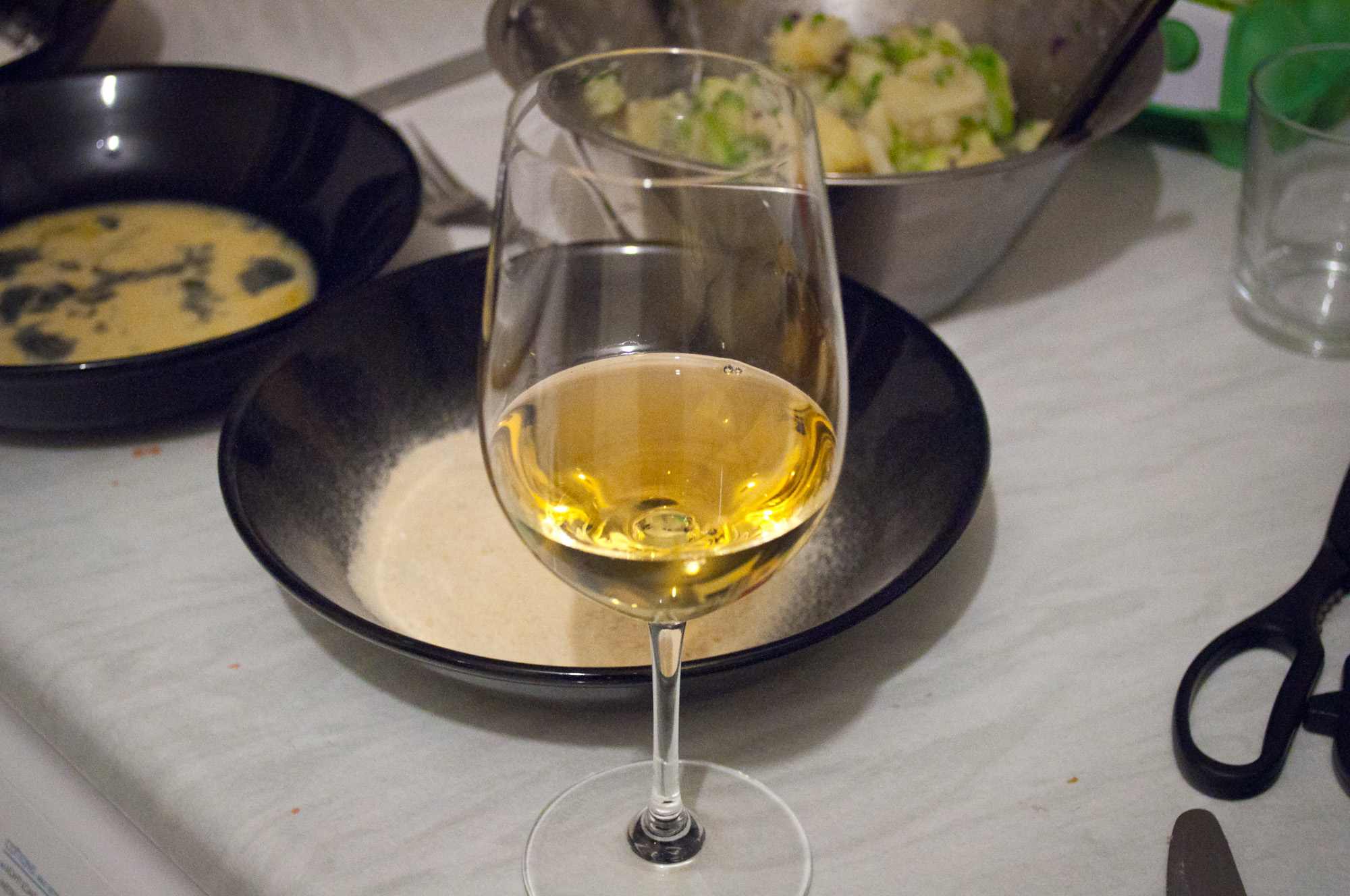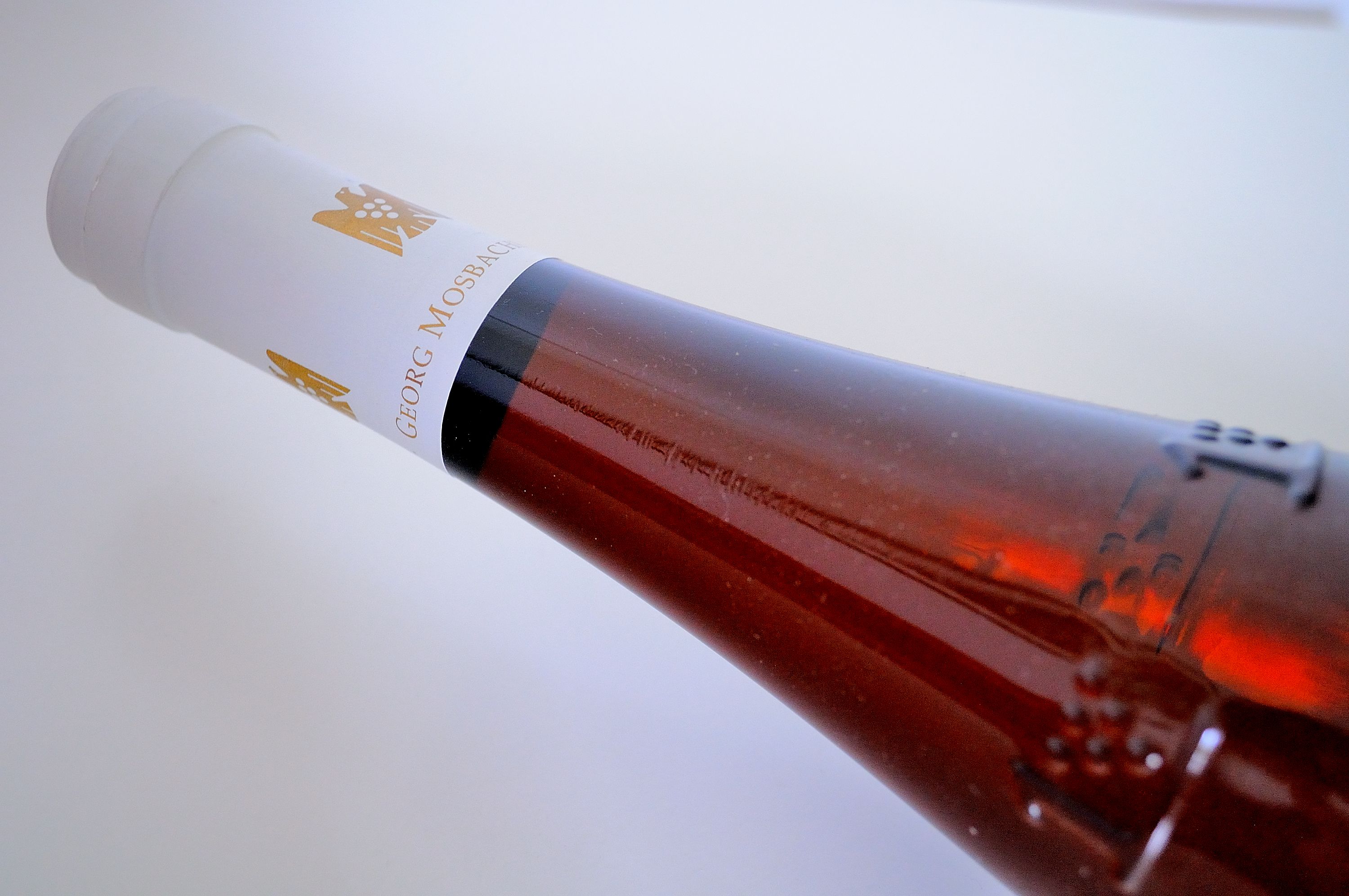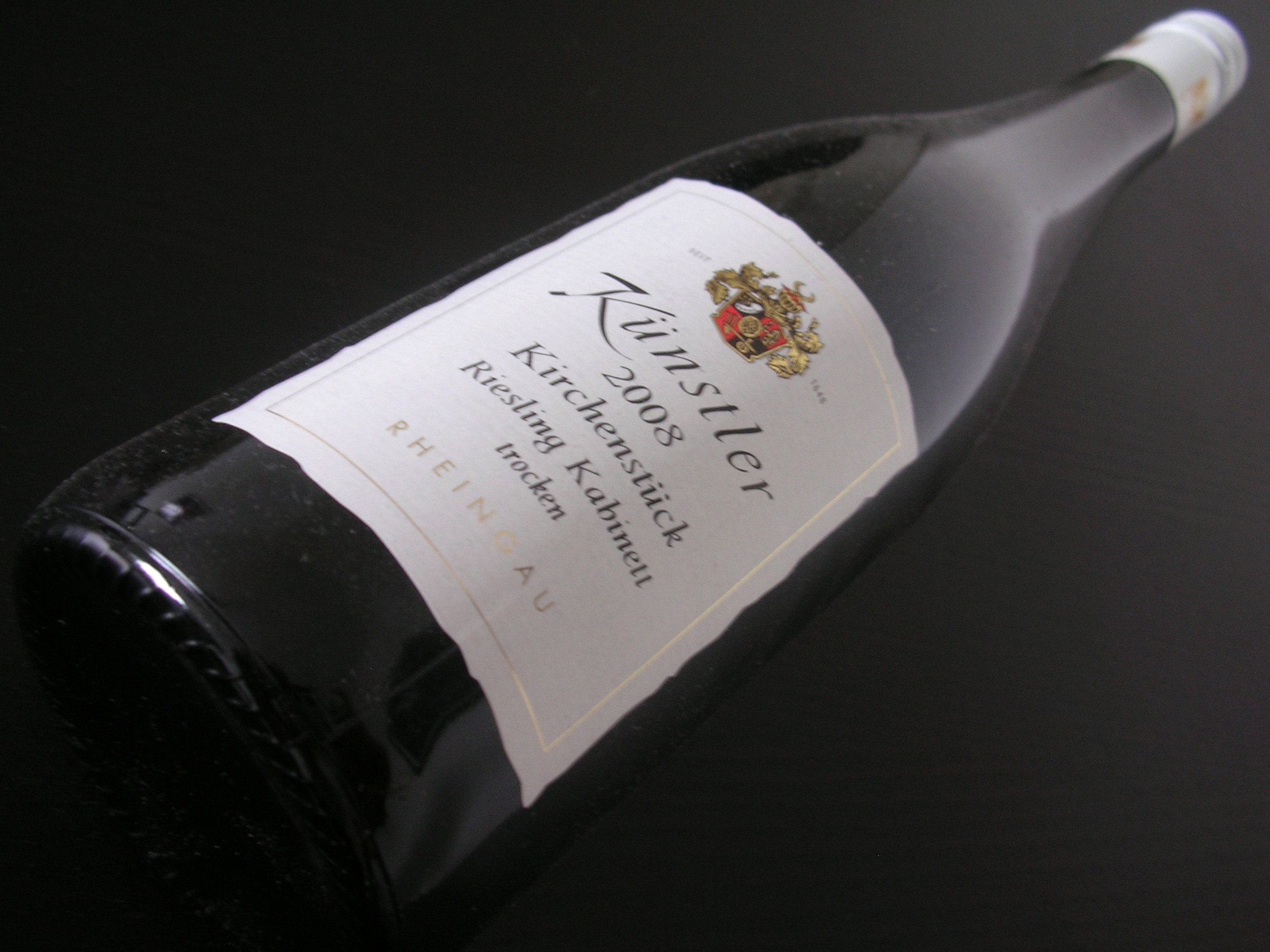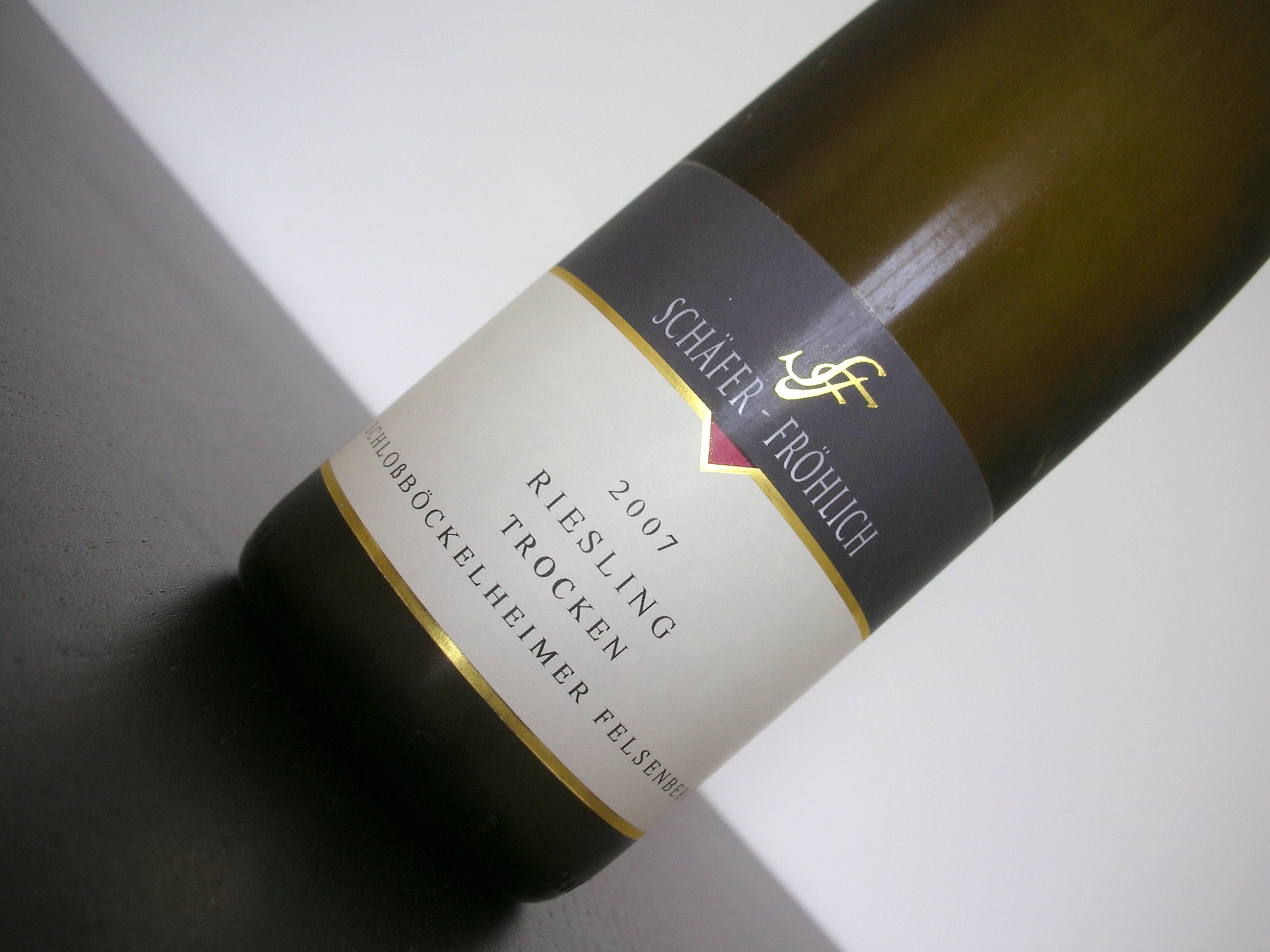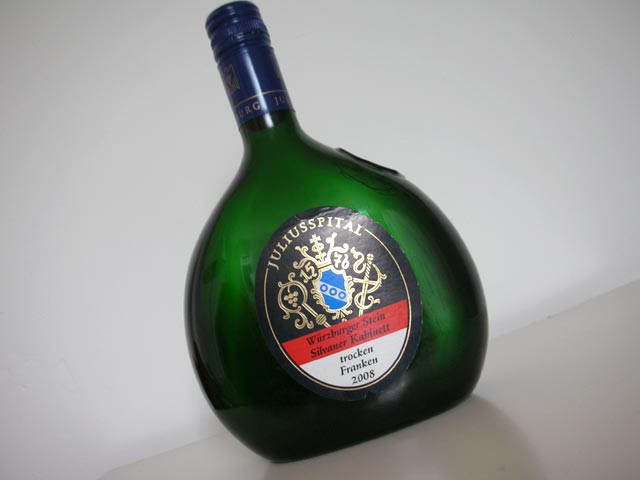Künstler, Hochheimer Hölle, Riesling Erstes Gewächs, 2007
Abroad Germany is mostly know for its delicious sweeter Riesling, but at home it is the top dry Rieslings that get most media attention. They are labelled as "Großes Gewächs" (great growth) or, in the Rheingau, as "Erstes Gewächs" (first growth), at least for the wineries that are members of the growers associations that created these classifications. Quality standards are relatively strict and include low yields, selective harvesting by hand and using only grapes from individual, certified top vineyards.

The price for these grand cru wines is constantly going up, so if you find one from a top producer such as Künstler for less than 20 Euro it is lucky times.

